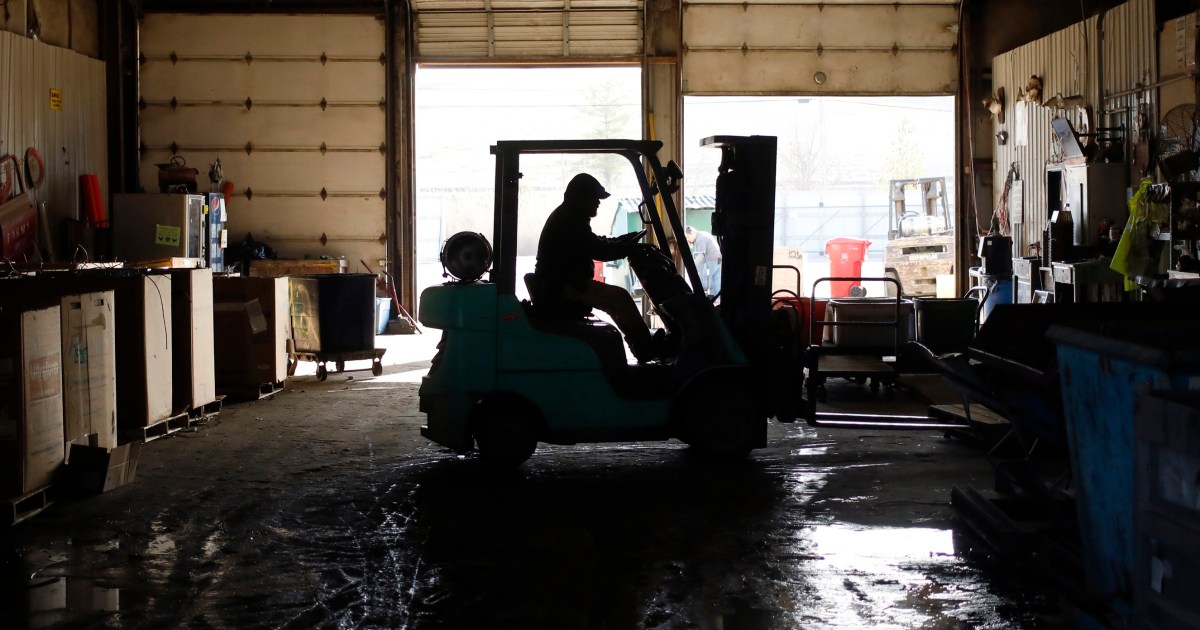
A fading pandemic, record inflation and higher prices for goods and services is driving workers back into the job market.
The U.S. economy added 431,000 jobs in March and the unemployment rate fell to 3.6 percent, according to data released by the Bureau of Labor Statistics on Friday.
The data represents a decline from jobs numbers in February when employers hired 678,000 people and the unemployment rate fell to 3.8 percent, blowing past analyst expectations at that time. Upward revisions added an additional combined 95,000 jobs to the past two months’ reports.
The ADP Research Institute, which provides data on employment trends, had earlier this week predicted the addition of 455,000 non-farm payrolls for the month of March.
But in March, the number of unemployed people decreased by 318,000 to 6 million, according to government figures — little changed from where the employment situation stood in February 2020, before the Covid-19 pandemic threw a wrench into the economy.
The current unemployment rate is within a tenth of a percentage point of February 2020, when the jobless rate had fallen to a historically low 3.5 percent.
A broader measure of jobless figures that includes people who are also underemployed dropped to 6.9 percent, roughly on par with its pre-pandemic level. Underemployed people are typically described in the federal data as people working part-time for economic reasons and unemployed people who are not looking for work.
Notably, more women took jobs in March: After being anchored at 3.6 percent since December, the unemployment rate among women 20 years and older fell to 3.3 percent. The labor force participation rate ticked up to 62.4 percent, one percentage point below February 2020.
Inching closer to normal
Wells Fargo Investment Institute senior global market strategist Sameer Samana said a number of factors appear to be drawing workers off of the sidelines.
“Covid is less of a concern,” he said. “With enough vaccines, enough therapies, enough herd immunity … hopefully [workers] feel a little bit more comfortable now.”
Inflation running near four-decade highs is another likely motivation. “Gas prices are rising, grocery prices are rising, the cost of discretionary goods and services like travel and eating out are going up. That’s probably nudging some people off the sidelines,” Samana said.
Collectively, these figures suggest the jobs market is returning to its pre-pandemic state. This raises expectations that the Federal Reserve will raise its benchmark interest rate by half a percentage point at its Federal Open Markets Committee (FOMC) meeting in May, said Lindsey Piegza, chief economist for Stifel Financial.
“With yet another strong jobs report and the Fed’s preferred inflation metric pushing to a near-four decade high, there is little reason why the market should not expect a 50 [basis point] hike at the next FOMC meeting,” she said via email.
From ‘on the mend’ to ‘on the move’
In remarks from the White House on Friday, President Joe Biden said the hiring trend would help address some of the wider issues in the economy as worker shortages have contributed to rising prices.
“It’s going to help ease the supply pressures we’ve seen, and that’s good news for fighting inflation, it’s good news for our economy and it means that our economy has gone from being on the mend to being on the move,” Biden said.
But the president acknowledged there was more his administration needed to do to address inflation.
“Even though we created a record number of jobs we know, I know, that this job is not finished, we need to do more to get prices under control,” Biden said.
Several industry sectors have reached or surpassed their February 2020 employment levels, including transportation and warehousing, retail, finance, and professional and business services.
One notable outlier is the leisure and hospitality sector. Although restaurants, hotels and the like have contributed significantly to the recovery’s job gains, the industry is still nearly 9 percent — or 1.5 million jobs — smaller. Social assistance, healthcare and manufacturing jobs also remain below where they were before the pandemic.
Hourly wages ticked up slightly in March to $31.73, continuing a 12-month trend during which hourly pay rose 5.6 percent, the BLS report said.
Glassdoor senior economist Daniel Zhao noted that the biggest pay gains traditionally go to new hires, but there are indications of a ripple effect helping raise pay for the workforce more broadly.
“Workers who switch jobs often set market wages,” he said via email. “However, we are seeing wage growth for workers staying at their employers picking up as employers recognize they need to increase pay to retain the workers they do have.”
Pay ticked up for workers in most industry sectors, but market observers said that even this level of robust wage growth won’t be enough to keep up if inflation continues to rise, particularly for lower-income workers and families.
“Consumers, particularly consumers who rent, are going to be under pressure,” said Jay Hatfield, CEO of Infrastructure Capital. “They’re not just getting slammed by energy costs and food but rents — rents are up double digits. This is a huge problem.”
Source: | This article originally belongs to Nbcnews.com










